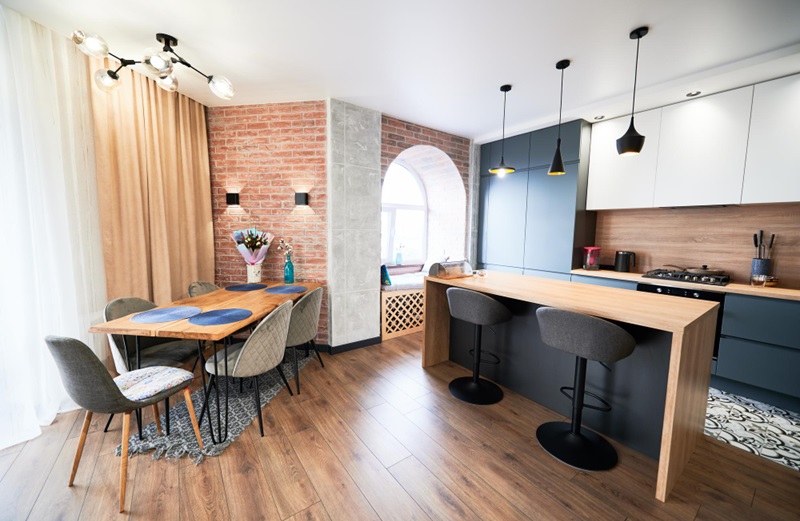
Is your habitat missing that special cherry on top? Do you often find yourself browsing through home magazines, longing for the handpicked, thoughtful touches that seem to jump off the pages straight into your imagination? Or perhaps you’re simply seeking ways to rejuvenate and breathe life back into your nest after a long, homebound year. One thing is certain; transforming your home into an aesthetic haven shouldn’t be an impossible feat, but a gratifying journey!
This blog post lens in on sparking inspiration from top interior stylists around the world. These aren’t merely about the latest trends or fads, but profound design principles fashioned over time, and beautiful ideas that withstand the revolving door of trends. From decluttering for elegance, to choosing colors that speak volumes about your personality, and showcasing collected treasures, it’s about crafting a home that reflects your unique essence—with a generous sprinkling of style and functionality.
Here’s to a delightful exploration of the ‘hows’, the ‘whys’, and the ‘whats’ of enlivening your home and transforming it into a space that not only amplifies its aesthetic appeal but also emanates warmth and hospitality.
Principle Of Decluttering And Its Elegance
Removing clutter isn’t just an act of cleaning; it’s all about creating space for things that truly matter, for things that uplift the spirit and contribute positively to our well-being. The secret, as many top designers would hint, lies in keeping things minimalist without losing the charm. It’s about understanding the difference between ‘less’ and ‘emptiness’, letting go of the unnecessary, and lovingly curating what stays.
Decluttered spaces lend an air of elegance and class while being soothing to the mind. It doesn’t mean stripping your spaces bare, but about maintaining a harmonious balance. As Japanese designer Toshiyuki Kita expressed, “Too much plus and too much minus, each bad. Keep to the middle; this is best.” Indeed, the charm of decluttering lies in its harmonious ‘middle’.
The Enigma Of Color Selection
An often underplayed aspect of design is the thoughtful use of colors. Top interior stylists commonly express a love for the timeless, for classic shades that don’t go out of style. Neutral tones like beige, cream, or gray are a favorite – forming a canvas upon which one can paint splashes of individuality.
Digging further, color psychology indicates that different hues evoke distinct emotions. Understanding this correlation can aid in creating spaces that resonate with desired moods. From grace and romance evoked by soft blush hues to the vibrant pop of turquoise fostering creativity and balance, knowing the meaning behind your palette is part of the adventure!
Showcase Your Treasured Possessions
Our homes should tell our stories – and what better way to narrate them than through objects of sentimental value? Bookshelves filled with literary classics from your childhood, a woven rug picked up during your Morocco sojourn, or a vibrant art piece from a local artisan at a flea market in your city, each adds a layer of personal narrative to your home.
The best interiors, as many stylists agree, are not ones that strictly follow the latest trends but those that create a fluid blend of personal memorabilia and style motifs. The aim is to construct a space that mirrors our journey, our experiences, and inevitably, ourselves.
Curating An Inviting Atmosphere
Beyond visual appeal, a home should emanate warmth and hospitality. Stylists opine that sensory experiences contribute greatly to creating inviting atmospheres. This can be achieved by focusing on olfactory elements like scented candles, tactile dimensions like soft rugs and cushions, and auditory cues like wind chimes or soft ambient music.
In essence, crafting a tantalizing milieu isn’t just about choosing the right wallpaper or furniture, but also about tending to subtle elements of experiential aesthetics.
Harmonizing Indoor And Outdoor Elements
In recent times, sustainable design constructs like biophilic design have cast a spotlight on the health and aesthetic benefits of integrating natural elements into our homes. This could range from the copious use of indoor plants, to natural light abundance, and artisanal pieces made from sustainable materials.
Integrating outdoors indoors thus doesn’t simply mean adding a few potted plants. It also means leveraging natural textures and colors, optimizing daylight, and ensuring a continuous flow of fresh air.
Conclusion
Dictating design principles merely scratch the surface of aesthetic home improvement. It’s a process that goes beyond the rulebook, steeped in personal flair, stories, and a keen understanding of spaces. In the wisdom of legendary interior designer Billy Baldwin, “Be faithful to your own taste because nothing you really like is ever out of style.”
Undeniably, the aesthetics of these tips lies in, not just their universal applicability, but in their capacity to accommodate diversity. At its heart, boosting home aesthetics should be a transformative journey of weaving together our unique threads of experiences, style, and personality into a tangible tapestry that we call home.





